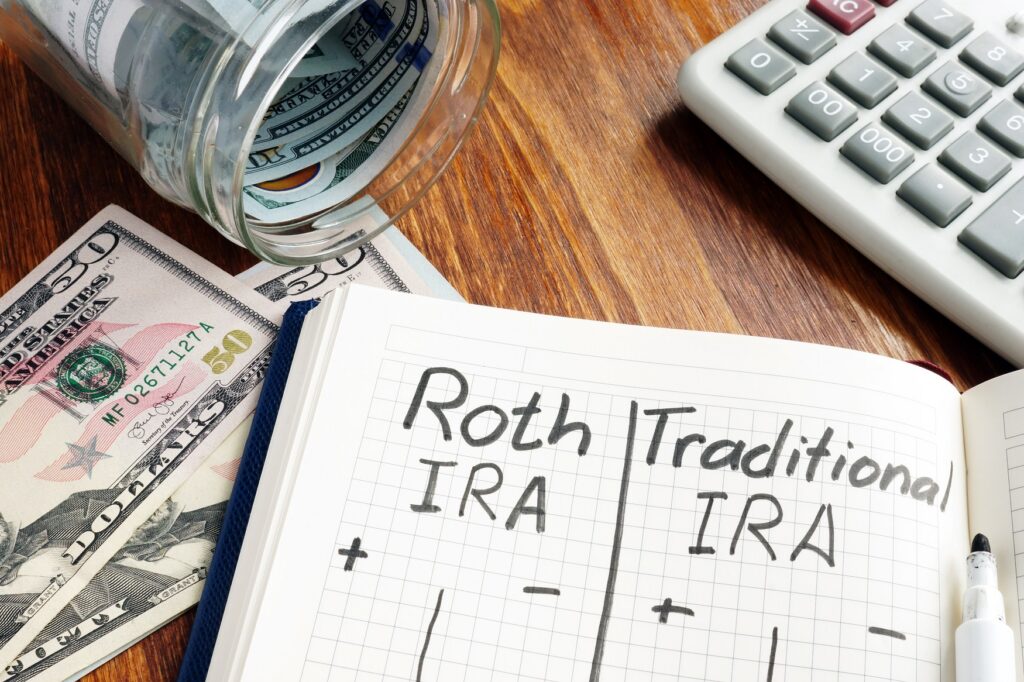There are several different types of retirement accounts available in the United States, each with its own unique features and tax benefits.
There are several different types of retirement accounts available in the United States, each with its own unique features and benefits. Here are some of the key differences between the most common types of retirement accounts:
401(k) Plan: Employer-sponsored retirement plan.
- Employee salary deferral limit: $23,000 for 2024; $23,500 for 2025.
- Catch-up contribution (age 50+): $7,500 for both 2024 and 2025.
- Total contributions (employee + employer) limit: up to $69,000 for 2024; up to $70,000 for 2025.
Traditional IRA: Individual retirement account with pre-tax contributions possible; tax-deferred growth.
- Contribution limit for 2024 and 2025: $7,000 (for under age 50).
- Catch-up contribution (age 50+): $1,000, making the total limit $8,000 for those age 50+ in 2024 and 2025.
Roth IRA: After-tax contributions; qualified withdrawals are tax-free and growth is tax-free.
- Contribution limit is the same as Traditional IRA: $7,000 for under 50, $8,000 for age 50+ in both 2024 and 2025.
- Note: Eligibility to contribute to a Roth depends on income (MAGI) and filing status.
SEP IRA: Simplified Employee Pension—designed for self-employed or small business owners; employer makes the contributions.
- Employer contribution limit: 25% of eligible compensation OR a capped dollar amount, whichever is less.
- Cap: $69,000 for tax year 2024.
- Cap: $70,000 for tax year 2025.
SIMPLE IRA: Retirement plan for small businesses (employees can contribute; employer must match or contribute a fixed amount).
- Employee salary-reduction contribution limit: $16,000 for 2024.
- For 2025: The employee deferral limit under a SIMPLE plan is $16,500.
- Catch-up contribution (age 50+): $3,500 for both 2024 and 2025.
Solo 401(k) (One-Participant 401(k)): For self-employed individuals or business owners with no employees (other than a spouse).
- Employee contribution: same as standard 401(k) deferral limit — e.g., $23,000 for 2024; $23,500 for 2025.
- Additionally, employer profit-sharing contribution up to 25% of compensation; total contribution limit (employee + employer) aligns with defined contribution limit — up to $69,000 for 2024, up to $70,000 for 2025.
Overall, the main differences between these retirement accounts are the contribution limits, tax treatment, and eligibility requirements.
It’s important to carefully consider the features of each type of retirement account and consult with a financial advisor to determine which one is best for your specific needs and circumstances,” shared Daniel Ahart, chief tax officer at the tax preparation company Daniel Ahart Tax Service®.

When is the deadline for 2025 contributions?
The deadline for most retirement contributions for the tax year 2025 is April 18, 2026. Click here to learn more.
Remember that every person and every tax return is different, this is just a guide, please find the closest DATS location near you and do not hesitate to contact us. Daniel Ahart Tax Service will be open and ready to answer the phone or in person to clarify any doubts and to be able to guide you in the process,” explains Daniel Ahart, chief tax officer at the tax preparation company Daniel Ahart Tax Service®
Taking Care of your Crypto Taxes
Also, remember that if you have any crypto tax obligations for the 2025 tax year, you need to report it. Join the thousands of individuals in the State of Georgia that trust their taxes to Daniel Ahart each year!
Schedule An Appointment
Appointments are encouraged so that we are able to limit the number of people in our office. We ask that you come by yourself or with your spouse. Don’t bring extra people such as children.
Use our tool to find the office nearest you or click on a city link below. You will find office information and a link to schedule and manage your appointment on the office page.
Search For An Office
Select office for contact information or to schedule an appointment.
